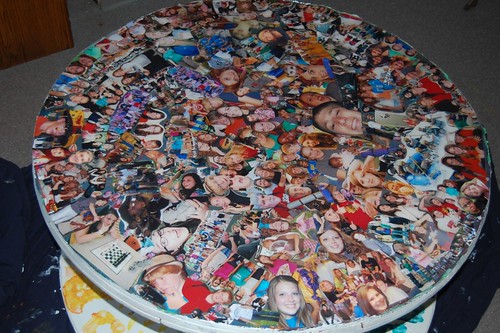We’re living in the era of the black box church. These churches are typically found in vacant storefronts or empty warehouses. The idea behind them is that it’s wiser for today’s churches to invest money into a versatile space than it is for them to build traditional church sanctuaries. To attract non-Christians, “black boxes” typically remain free of traditional church symbols and artwork like crosses and stain glass windows. Instead, money is spent on screens, projectors, and sound equipment that can be used for worship, youth group, children’s carnivals, meetings, and any other activity that might utilize that space.
While my church is much more traditional and therefore includes a sanctuary, the era of the black box church has still influenced my thinking regarding the youth room in which my ministry meets. Because of this influence, throughout my career, I’ve paid little attention to my youth room and have put very little money into altering it, believing that a simple, versatile space will best resonate with my students and meet the needs of our ministry.
Yet, what’s happened instead is that my youth room has become the dumping ground for old couches, chairs, bookshelves, pictures, cleaning supplies, paint, Foosball tables, and the like, resulting in an inhospitable and unwelcoming environment for my students.
Because of this, it’s been my goal for the last year to begin making over the Youth Room, something that we actually began doing last week. I held two “Youth Room Makeover” days for my students – work days when my students could stop by anytime during an 8 hour window and stay for as long as they were able. Much to my surprise – my students came!
We began our makeover simply by cleaning. We sorted, sifted, and unearthed things that I swear had not seen the light of day for at least twenty years. We filled our church’s large dumpster and straightened the room, making it feel less cluttered and much more welcoming. We then rearranged the room to create four distinct areas that we can now utilize in a variety of ways.
Given that it was 90 plus degrees on the days we were working, the result was a lot of sweat but, more importantly, a lot of excitement and energy over our space. Surprisingly, those two minor things – Cleaning and rearranging the furniture – also resulted in a heightened sense of ownership from my students, who have already begun dreaming ways we can utilize the various areas of our room. Such excitement and ownership has really convinced me something that organizations like Habitat for Humanity have known for years: Sweat equity works.
Aside from cleaning and rearranging our youth room, we were limited by our budget in terms of what else we could do to transform our space. For this reason, at the end of our two work days, we were left with the hodgepodge of mismatched couches that I’m convinced are the cornerstone of most youth rooms around the country. But we had made three easy, low-cost, yet significant changes to the room:
1. We repainted one small wall using black chalkboard paint to give students a place to doodle and share prayer requests and me a tool to use while teaching.
2. We took our oldest, dumpiest table and transformed it into a photo table. This utilized some of the hundreds of old pictures that were strewn about the room. Moreover, it was such fun to watch our students work together on this project. As they cut and mod-podged the photos to the table, they shared memories and stories from the events at which they were taken. This table has now become the centerpiece of our new “discussion area” because students are convinced that it will be a great way to spark conversations with new people.

3. Lastly, contrary to everything I thought I knew from the era of the black box church, I chose to embrace art in my youth room. I went to Michael’s and bought an assortment of stretched canvases and acryllic paints and then invited youth to express themselves. I watched, slightly bewildered, as student after student picked up a canvas and painted. Some painted abstracts. Some painted quotes that were particularly meaningful to them. Others just painted random objects (For example: The centerpiece of one canvas is a carrot.) But all painted. Through this process, my students taught me that even though we live in a digital world, art does not have to be digital to attract students or to be meaningful to them. In fact, for them, it just may be that more traditional forms of art – like painting a stretched canvas – are even more meaningful precisely because they’re becoming something of a lost art.

By the time our two work days were complete, we had 8 completed canvases to decorate our youth room with an added bonus being that because they’re canvases, they can be taken down and replaced with a minimal expenditure as students graduate or as the needs of our room change.
Because of our experiment with these canvases, I’m pretty sure that this year, in response to student’s requests, we’ll also be incorporating art nights into our youth ministry’s schedule, something that reflects what both I and my students learned by doing this youth room makeover: Art has the potential to express ourselves and our faith in a way that few other things can. It can be used to transform any space – even a black box – into a worshipful area that points to a Creator God who called us to follow suit and create.